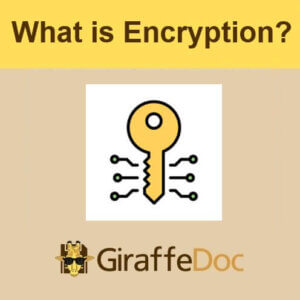
Encryption Basics:
Encryption is the act of taking readable data and converting it into ciphertext or unreadable characters using an algorithm and a key. This transformation ensures that if the data is intercepted or is not delivered to the intended individual the data will remain protected and unusable. For privacy conscious individuals’ levels of encryption and how data is encrypted play a vital role in protecting sensitive information. One of the most widely used encryption algorithms is the Advanced Encryption Standard (AES). In this article, we will look into the various levels of encryption offered by AES and shed light on their strengths and applications.
Understanding AES Encryption:
AES, also known as Rijndael, is a symmetric encryption algorithm that operates on fixed-length blocks of data. It was adopted by the U.S. government as the standard encryption algorithm for protecting classified information and has since become a widely accepted standard for data protection.
AES supports three key sizes: 128-bit, 192-bit, and 256-bit. These key sizes refer to the length of the encryption key used in the algorithm. The larger the key size, the stronger the encryption and the more resistant it is to brute-force attacks.
Levels of Encryption in AES:
- AES-128: AES-128 uses a 128-bit key and operates on data blocks of 128 bits. It provides a high level of security and is widely considered to be computationally secure against most known attacks. AES-128 is suitable for a broad range of applications where speed and efficiency are important while maintaining strong encryption.
- AES-192: AES-192 employs a 192-bit key and operates on 128-bit data blocks. The increased key size provides an additional layer of security over AES-128. While AES-192 offers slightly stronger encryption, it may require slightly more computational resources than AES-128. AES-192 is typically used in situations where a higher level of security is desired or required by specific regulations.
- AES-256: AES-256 utilizes a 256-bit key and operates on 128-bit data blocks. It offers the highest level of security among the three AES key sizes. AES-256 provides enhanced resistance against brute-force attacks and other cryptographic vulnerabilities. This level of encryption is commonly used in highly sensitive applications, such as government communications, financial systems, and classified data protection.
Choosing the Appropriate Level of AES Encryption:
The choice of AES encryption level depends on several factors, including the sensitivity of the data, the potential threats, and the computational resources available. In most cases, AES-128 provides a strong level of security for everyday applications and strikes a balance between security and performance. AES-192 and AES-256 are recommended for scenarios where stronger encryption is necessary, such as highly classified information, personally identifiable financial information, or situations where regulatory requirements mandate a higher level of protection.
AES encryption is a widely trusted and secure algorithm for protecting sensitive data. By understanding the various levels of encryption offered by AES—AES-128, AES-192, and AES-256—organizations can select the appropriate level of security based on their specific needs. Whether it’s securing financial transactions, safeguarding personal information, or protecting classified data, AES encryption provides a robust and reliable solution that upholds the confidentiality and integrity of sensitive information in an increasingly interconnected world.
Encryption at GiraffeDoc
GiraffeDoc is committed to the highest levels of encryption. GiraffeDoc’s application utilizes AES-256 level encryption at rest and during transit. GiraffeDoc is a platform that encryption and security take priority over fractional speed increases. Protecting you and your customers data is priority to GiraffeDoc. GiraffeDoc also utilizes enhanced encryption processes that allows for the encryption of data on device and during its entire transit process until the data gets to its recipient. GiraffeDoc’s encryption protocol is engrained in our process and does not rely on any internet browser basic encryption method.





